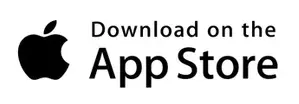Nvidia’s High-Flying Earnings Grounded by Inflation Fears as Wall Street Stumbles
As the sun set on Thursday evening, U.S. stock index futures found a bit of stability, still licking their wounds from a bruising session earlier. The dual specters of persistent inflation and looming high interest rates cast a shadow over the otherwise cheery news from Nvidia, the stock market’s golden child.
Nvidia Corporation (NASDAQ:NVDA) hit record highs, buoyed by a stellar first-quarter earnings report that had investors doing a happy dance. However, the jubilation seemed to lose its mojo in Friday’s after-hours trading.
By 19:47 ET (23:47 GMT), S&P 500 Futures inched up 0.1% to 5,288.75 points. Meanwhile, Nasdaq 100 Futures held steady at 18,704.25 points, and Dow Jones Futures remained unchanged at 39,152.0 points.
Nvidia’s Fireworks Fizzle Post-Earnings
After soaring to an all-time high of $1,063.0 during Thursday’s session, Nvidia dipped 0.3% in the after-hours, the market equivalent of catching its breath. The tech titan wowed Wall Street with better-than-expected first-quarter earnings, a bullish outlook for the second quarter, and the announcement of a 10-for-one stock split.
While Nvidia’s surge initially spread joy to broader tech stocks, like a DJ playing a crowd favorite at a party, the enthusiasm was tempered by the Federal Reserve’s hawkish whispers about sustained high interest rates. Despite this, Nvidia’s rise, as the third-largest company on Wall Street, managed to cushion some of the broader market’s losses.
Wall Street’s Rough Ride on Inflation and Rate Worries
Wall Street ended Thursday on a downbeat note, with major indexes suffering broad-based losses. The Fed’s latest signals suggested a longer battle with sticky inflation, dashing hopes for any imminent rate cuts.
The S&P 500 dropped 0.7% to 5,267.84 points, and the NASDAQ Composite slipped 0.4% to 16,736.03 points. The Dow Jones Industrial Average, with its lighter tech exposure, fared the worst, plummeting 1.5% to 39,065.26 points.
Minutes from the Fed’s late-April meeting, paired with stern comments from several Fed officials, revealed a sobering outlook on inflation, pushing traders to largely rule out rate cuts this year. According to the CME Fedwatch tool, there’s now nearly an even chance—around 46%—that the Fed will either hold steady or cut rates come September.
Thursday’s drubbing set the S&P and the Dow on a path for weekly losses, while the Nasdaq significantly trimmed its gains for the week. All three indexes had reached record highs earlier in the week, only to find themselves ripe for a round of profit-taking.
FDA Advisers Give Thumbs Up to Guardant Health’s Blood Test for Colorectal Cancer
In a scene worthy of a medical drama, advisers to the U.S. Food and Drug Administration cast a crucial vote on Thursday, leaning 7-to-2 in favor of Guardant Health’s (NASDAQ:GH) blood test, Shield, for detecting colorectal cancer (CRC).
The FDA is expected to render its verdict on Shield later this year, with Guardant Health eagerly waiting for the green light. Should Shield receive approval, it will join the elite ranks of blood-based CRC tests, becoming only the second of its kind in the U.S. after Epigenomics’ Epi proColon, which debuted in 2016.
Guardant co-CEO AmirAli Talasaz hailed the advisory committee’s vote, saying it underscores the importance of offering a blood test to boost CRC screening rates among those at average risk.
CRC is no small fry, affecting around 150,000 Americans annually and ranking as the second-deadliest cancer in the country, claiming over 50,000 lives each year, according to the FDA.
While colonoscopy reigns supreme as the gold standard for colon cancer detection, its invasive nature makes it a hard sell. Alternatives like Exact Sciences’ (NASDAQ:EXAS) Cologuard, a fecal test, are available, but blood tests are seen as a more user-friendly option.
However, not all was rosy at the meeting. Panelists expressed concerns over Shield’s accuracy, noting it detected a mere 13% of precancerous tumors, known as advanced adenomas. FDA staff had flagged this issue in their briefing documents released earlier in the week.
Guardant’s Shield showed an 83% detection rate for colorectal cancers in studies, trailing behind Cologuard’s 92.3% sensitivity. “It’s better than nothing, but I don’t want to downplay the issue that this test is going to miss a lot of cancers,” said panel member Charity Morgan, a biostatistics professor at the University of Alabama.
Guardant Health executive Victoria Raymond acknowledged that Shield would need to be repeated every one to three years, but emphasized that “colonoscopy should be the prioritized option.”
Trading in Guardant Health shares was put on ice Thursday, adding a layer of suspense to the day’s events.
Ah, the art of investing before the weekend—it’s like betting on a horse race where the jockeys are caffeine-fueled algorithms and the track is a minefield of economic indicators. You place your bets on Friday afternoon, hoping your portfolio doesn’t turn into a pumpkin by Monday. Will your stocks soar like a caffeinated squirrel, or sink like a lead balloon at a helium party? Either way, you’re in for a rollercoaster ride, because in the world of finance, the weekend is just an extended intermission in the theater of market madness.



